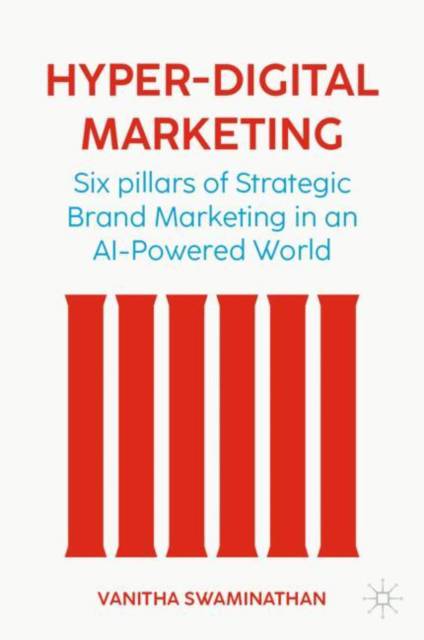
- Afhalen na 1 uur in een winkel met voorraad
- Gratis thuislevering in België vanaf € 30
- Ruim aanbod met 7 miljoen producten
- Afhalen na 1 uur in een winkel met voorraad
- Gratis thuislevering in België vanaf € 30
- Ruim aanbod met 7 miljoen producten
Zoeken
Hyper-Digital Marketing
Six Pillars of Strategic Brand Marketing in an AI-Powered World
Vanitha Swaminathan
Hardcover | Engels
€ 62,45
+ 124 punten
Omschrijving
The rapid changes in technology and the rise of AI have heralded the introduction of a new era, which we refer to as the era of hyper-digitalization. This shift has significant impacts on how organizations and enterprises carry out critical functions across various areas, including marketing, information technology, human resources, and others. We are witnessing the transformation of the marketing function, with many traditional roles of marketers being replaced by new roles that depend heavily on cross-functional coordination with multiple areas. These changes could be far-reaching and have already dramatically impacted how to organize many tasks within organizations. Against this backdrop, this book offers modern marketers and technologists a guide on navigating the many changes occurring in organizations. Any senior executive can leverage many of the concepts presented in this book and be able to handle the sweeping changes taking place in the age of AI. This book introduces a new framework with six pillars of modern marketing strategy in the age of hyper-digitalization - purpose, phygital experiences, platform, participation, personalization, and partnerships. Each pillar has its own chapter, which provides specific guidance for managers on how to implement it. The chapters also demonstrate how each pillar can influence key outcomes like attention and engagement. In the context of hyper-digitalization and AI, the six-pillar framework will help managers navigate current developments and implement changes that any enterprise is faced with. It will offer senior marketing strategists and students a framework for strategic thinking that prepares them for the workplace of tomorrow. The framework is supported by numerous case studies and examples (from both the United States and other parts of the world) that demonstrate how these concepts are applied in real-world situations. The book incorporates insights from scholarly research on these topics to provide evidence-based guidance for managers and executives.
Specificaties
Betrokkenen
- Auteur(s):
- Uitgeverij:
Inhoud
- Aantal bladzijden:
- 272
- Taal:
- Engels
Eigenschappen
- Productcode (EAN):
- 9783031956294
- Verschijningsdatum:
- 19/10/2025
- Uitvoering:
- Hardcover
- Formaat:
- Genaaid
- Afmetingen:
- 156 mm x 234 mm
- Gewicht:
- 598 g

Alleen bij Standaard Boekhandel
+ 124 punten op je klantenkaart van Standaard Boekhandel
Beoordelingen
We publiceren alleen reviews die voldoen aan de voorwaarden voor reviews. Bekijk onze voorwaarden voor reviews.








